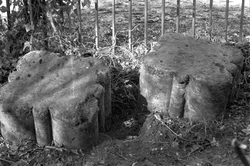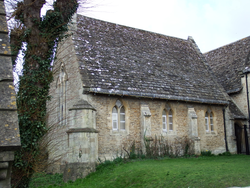
The Corpus of ROMANESQUE SCULPTURE in Britain & Ireland

School
The Bluecoat School was founded in 1646 by Richard Aldworth, a merchant, as a charitable foundation (Aldworth's Hospital) to support 20 poor boys and their schoolmaster. Its original home was near St Mary's in Reading, but in January 1947 it moved to Holme Park, its present home, well known as the site of the medieval palace of the Bishops of Salisbury, and the place where Charles Keyser discovered the 15 capitals and two voussoirs that form the core of the collection of Reading Abbey cloister stone now in Reading Museum (qv).
School
The present school was refounded as King Alfred's Grammar School in 1850, and was built in a 13thc style by G. Street and J. B. Clacy (1849-50). Incorporated in it was the 12thc. doorway of the former Latin School (once sited in the churchyard of the parish church of St Peter and St Paul, but discontinued in 1832). This doorway became the entrance to a classroom, which was subsequently used as a chapel and later still functioned as Wantage Register Office. This was the case in 1998, but the Registry Office later moved to a new site in the Civic Hall, and has since closed. The doorway is now part of the school again, and is at the N end of a chapel-like block on the N side of Portway, with a bellcote over its S gable.

